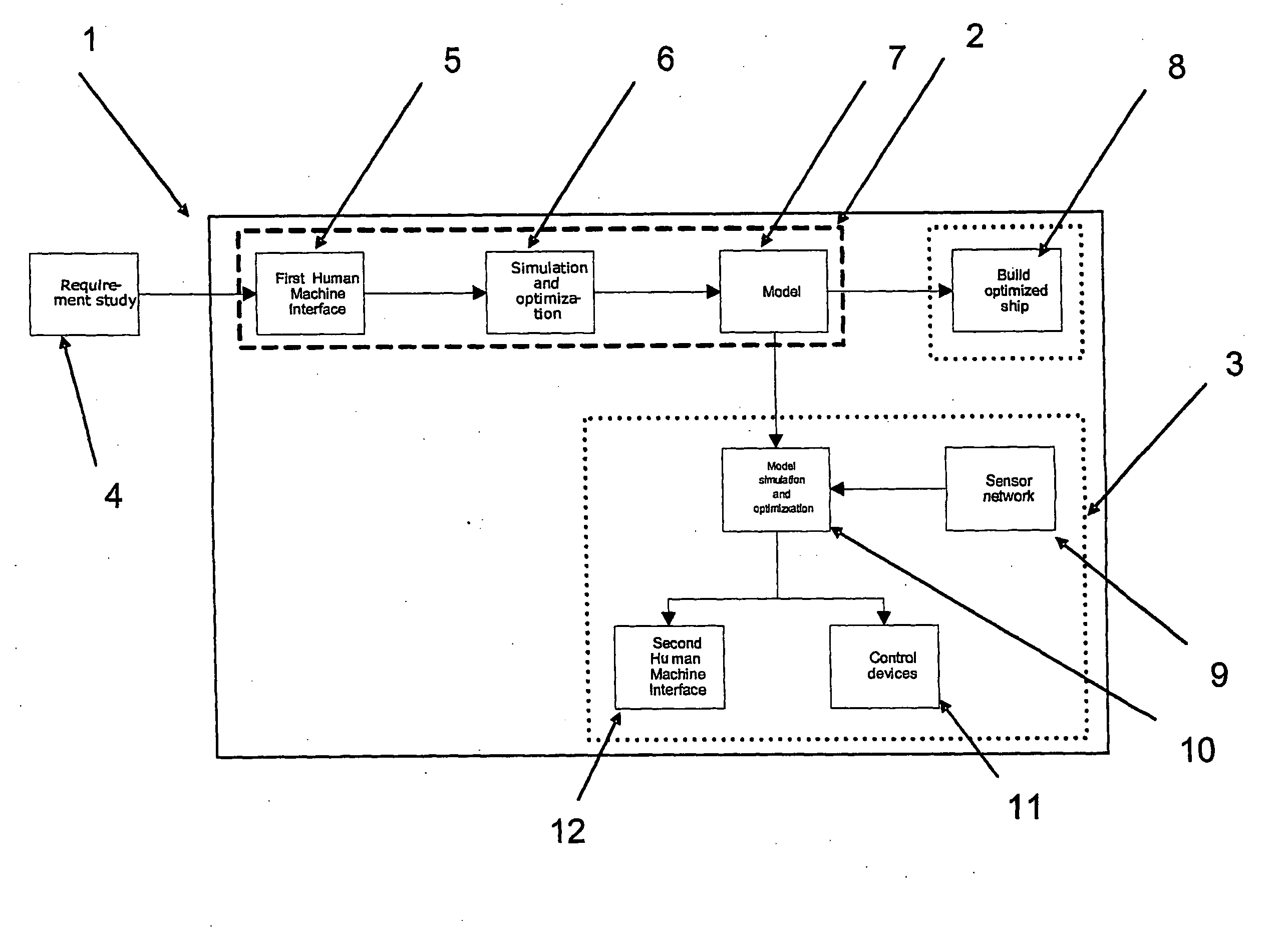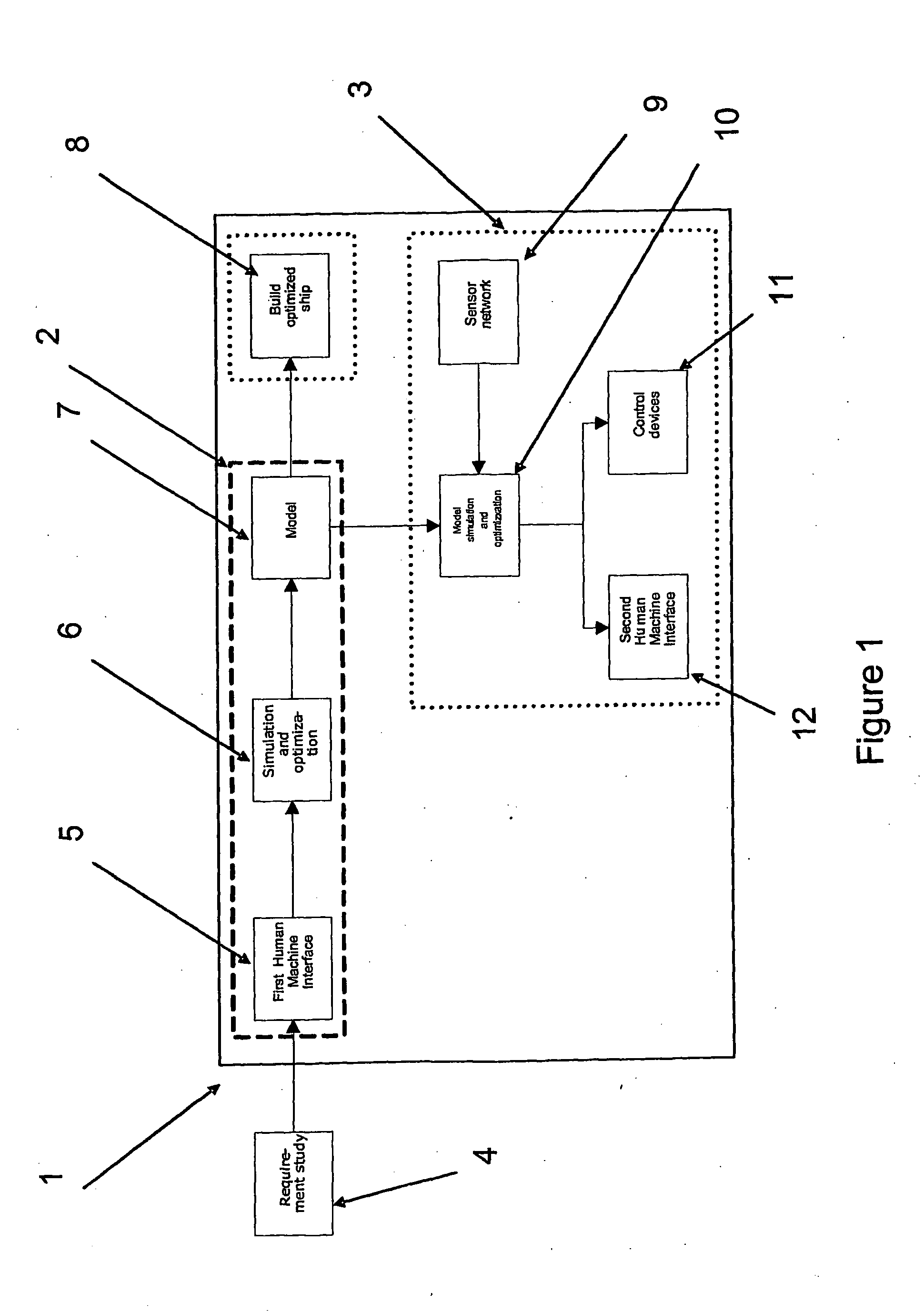Optimization of Energy Source Usage in Ships
a technology for optimizing the usage of energy sources and ships, applied in vessel design, analog and hybrid computing, vessel construction, etc., can solve the problems of high design costs, high capital investment and operating costs in the shipping industry, and the cost of ship construction is a high factor, so as to increase the efficiency of ship design.
- Summary
- Abstract
- Description
- Claims
- Application Information
AI Technical Summary
Benefits of technology
Problems solved by technology
Method used
Image
Examples
Embodiment Construction
[0042]The fuel consumption of a vessel is determined by the coactions of the vessel's machine system, and is affected by external conditions such as weather and currents. Considering that fuel costs are one of the greatest expenses of a vessel, not forgetting the negative environmental effects that fuel consumption has, it is important that it is managed and minimized.
[0043]In the present context the following terminology applies:[0044]PLC Programmable Logic Controller[0045]OPC A collection of standards for communications with PLCs and other equipment[0046]OPC Handles communications with one or more PLCs, encapsulating the underlying[0047]Server protocols[0048]OPC Client Connects to 1 or more OPC Servers to read or write values to PLCs[0049]NMEA National Marine Electronics Association communication standard[0050]MetaPower Torque and power measurement system for rotating shafts[0051]Ack Acknowledge (to admit to have recognized)[0052]GPS Global Positioning System[0053]Tag An item bein...
PUM
 Login to View More
Login to View More Abstract
Description
Claims
Application Information
 Login to View More
Login to View More - R&D
- Intellectual Property
- Life Sciences
- Materials
- Tech Scout
- Unparalleled Data Quality
- Higher Quality Content
- 60% Fewer Hallucinations
Browse by: Latest US Patents, China's latest patents, Technical Efficacy Thesaurus, Application Domain, Technology Topic, Popular Technical Reports.
© 2025 PatSnap. All rights reserved.Legal|Privacy policy|Modern Slavery Act Transparency Statement|Sitemap|About US| Contact US: help@patsnap.com



